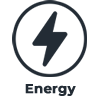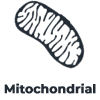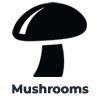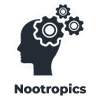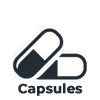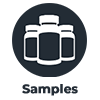What Is So Interesting About NAD+?
Nicotinamide adenine dinucleotide, otherwise known as NAD+, has been all the rage recently. However, what actually is it? NAD+ is a very critical coenzyme that is necessary for the proper functioning of hundreds of enzymes throughout the body. Furthermore, it is found in every cell of the body and plays a crucial role in energy production and metabolism. In fact, a highly prominent NAD+ researcher, Dr. David Sinclair, has often proclaimed that without NAD+ in our bodies, we would be dead in 30 seconds! That’s quite a claim. It’s also very much true, which highlights the sheer importance of NAD+.
Due to its presence in all of our cells, it is quite clear that maintaining adequate NAD+ levels are crucial to our overall health. The problem is that NAD+ levels decline as we age. Due to this, NAD+ has often been touted as one of the best longevity supplements out there. Replenishing NAD+ levels as we age can help enhance our energy levels, circadian rhythms, metabolism, cognitive function, and even healing! Even in younger individuals, elevating NAD+ levels could prove to be effective. This is because NAD+ levels can also decline due to various stressors, such as increased oxidative stress and increased body weight. Ensuring your body has adequate NAD+ levels is not only reserved for people in old age!
How is NAD+ made?
We can synthesize our own NAD+ in our bodies, and there are various different pathways which can lead to NAD+ production. The first pathway is the kynurenine pathway otherwise known as the de novo pathway. This pathway utilizes the dietary amino acid L-tryptophan as the starting material for NAD+ production. The path to generating NAD+ in the kynurenine pathway is quite lengthy and complex, and due to this is also not the most efficient pathway for NAD+ production.
The next pathway is the Preiss-Handler pathway which uses dietary nicotinic acid (vitamin B3) to generate NAD+. This pathway appears to be a lot more efficient, and indeed, low dietary intake of vitamin B3 can in fact cause NAD+ deficiencies. That being said, supplementing with nicotinic acid, while good at preventing deficiencies, is not the most efficient way of generating NAD+. For this, we must look towards the next pathway, the salvage pathway!
In the salvage pathway, nicotinamide mononucleotide, otherwise known as NMN, gets directly converted into NAD+ in just a single step! Within this pathway, nicotinamide riboside (NR), is also utilized and serves as a precursor to NMN. With this in mind, the most efficient way to raise NAD+ levels is to supplement with either NMN or NR. Thus, it is no surprise that this is by far the most utilized strategy for those looking to enhance their NAD+ status.
This does raise the question: which is better, NMN or NR? If you are simply looking to enhance NAD+, nothing beats NMN. NAD+ contains a large phosphate group, and this same phosphate group is already present in NMN, but is not present in NR. This is problematic, due to the fact that phosphate chemistry is not easy, and thus requires quite a bit of energy. This means that while NR is a great NAD+ precursor, NMN is better due to being much more efficient. That being said, NR does have some very unique properties within the brain. NR is contained in the axons of neurons, and higher levels of NR in these axons appears to exert a robust neuroprotective effect.



